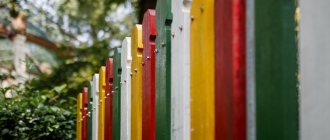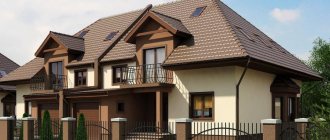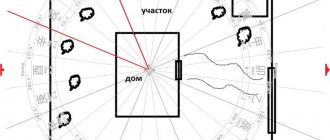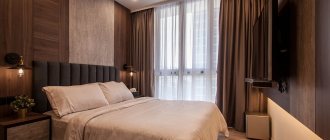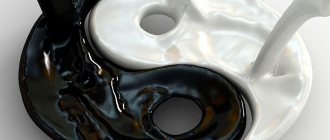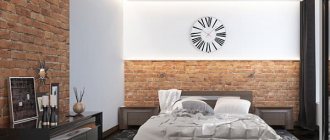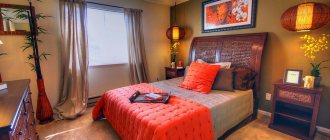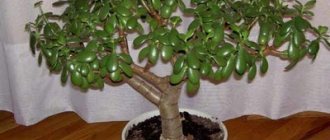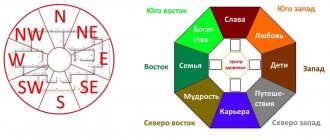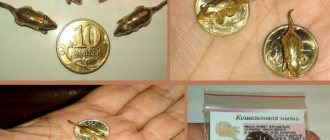Review author: Terra Design School
Feng Shui is an eastern teaching aimed at achieving well-being and prosperity through the correct design of living areas.
As a basis for planning a site according to Feng Shui, you can take the Ba Gua octagon or the Lo Shu square.
Should I choose a square or an octagon? If you are taking your first steps in Feng Shui, it is better to choose a square. It's a little easier to work with.
The optimal area for decoration would be a square or rectangle-shaped area. To divide the land into the necessary squares, you should arm yourself with a compass and determine the cardinal directions relative to the site. As soon as this problem is solved and the land is planned, you can proceed directly to its design.
Each zone of the summer cottage will be responsible for a certain aspect of life according to Feng Shui.
General feng shui of the area
The most favorable area is considered to be one that includes a house standing on a slight hill and surrounded on the left and right by small smooth hills. In this case, the left hill (Dragon) should be slightly higher than its right counterpart (Tiger).
The right and left sides are determined by standing with your back to the front of the house.
The hill behind the house symbolizes the Turtle, and the flat area in front of the house represents the Red Phoenix.
The Dragon
The dragon is considered a creature responsible for well-being and prosperity; it protects against evil and protects against negative energy. It is the Dragon that gives birth to Qi energy, which attracts positive changes and brings the fulfillment of desires closer.
If there is no Dragon Hill, then you can install a bright lantern on the left side, which increases the energy of this sector.
Northwest
North-West is masculine. The energy of this area represents travel and self-development. For maximum harmony, it is necessary to install metal objects here: gratings, benches, etc.
You should adhere to rigor and modesty in the design of this site. Flowers would not be appropriate here. It is best to plant shrubs and trees, such as apricot.
Tiger
This brave animal personifies Yin energy.
However, despite her feminine nature, she has a fair amount of strength and courage. The tiger will reliably protect the owners of the plot from misfortunes and failures, fires and robberies, and will protect them from evil people and demons who bring discord into the family.
Turtle
If the location of the site according to Feng Shui is not very favorable and there is no hill behind the house, then you can increase the Turtle zone by erecting a wall behind the house or planting a large garden.
In Chinese teachings, this leisurely animal signifies wisdom, longevity, stability and health. In landscape design, this is a reliable protection from troubles, a reliable foundation and a solid foundation for family relationships.
How to activate the flow of energy
The southeast direction in the apartment is controlled by the Wood element. Natural furniture, beige and brown shades are what you need for comfortable work and profit.
Colors such as green and purple will keep the energy flowing in the wealth zone.
The tree is saturated with water, the symbolism of this element is the best activation of the sector.
Fountains and water
Place fountains, waterfalls, and aquariums with live fish in the room. The double talisman for attracting money is nine live carp, one of which is black. This symbolizes the protection of what has been accumulated.
You should be careful with water: too much of it will drown you. Strengthen the room if Fire elements prevail in it, and if the location of the money zone is favorable, then limit yourself to a small fountain. The water should move, but not violently. Standing water means financial stagnation.
Plants for wealth
When there are a lot of green plants in the house, the family prospers and does not experience money problems. For flowers, the best place would be a study.
Flowers with rounded and wide leaves, such as the crassula, known as the money or dollar tree, have magic.
Beware of thorny or pointed plants.
Cacti exude negative Sha energy, do not place them close to your work table or sit at an angle to the thorns. Monitor the condition of the flowers; they should not be sick or covered with dust.
Shape of the plot
According to Feng Shui, a summer cottage is considered ideal if it has the shape of a rectangle or square.
A trapezoidal plot is considered favorable if its smaller side falls on the facade of the house, providing the Turtle zone with a larger side.
The most unfortunate shape is considered to be a triangle.
However, if the owners got such a “wrong” plot, do not despair. All this can be changed by the harmonious placement of buildings and plantings.
LiveInternetLiveInternet
Quote from ARINA999
Read in full In your quotation book or community!
Garden planning according to the rules of Feng Shui
Two famous creatures of Chinese mythology play an important role in garden planning - as conductors of the beneficial power of the garden. This pair, dragon and phoenix, is part of the group of Five Animals, which have a special sacred status; In addition to those mentioned, the group also includes a tiger, a turtle and a snake. Each creature has its own symbolism and place in the garden.
The Chinese believed that buildings facing south are the best examples of feng shui, since the south symbolizes warmth and goodness; the same is true for the garden facing south. It is not surprising that four of the Five Animals were assigned each their own cardinal direction, and the fifth creature, the snake, occupied a central position. Below is a symbolic characteristic of animals and the associated sides of the horizon, established in the Feng Shui tradition.
THE DRAGON. East. (Wen)
Color: blue
Element: Wood
According to the most ancient beliefs of the East, the dragon is a symbol of spring. He is invisibly present in our world - he lives behind the clouds and from there observes what is happening below. Associated with the power of foresight and constancy, as well as with the highest spiritual wisdom of a person. Symbolizes protection, goodwill, culture, courtesy and good luck. (Feng Shui teaches that the dragon should always be on the left, and many Chinese to this day call their left side the “dragon side.”)
PHOENIX. South. (Feng Huang)
Color: red
Element: Fire
Phoenix is a bird of ancient myth that does not know death. Phoenix is associated with summer and has the ability to foresee the future. Able to comprehend the nature of the surrounding space and brings good luck. This beautiful bird symbolizes happiness, hope, fun, fame and wealth. Legends say that the phoenix builds a nest in the famous wutun tree (Firmiana simplex), and this is one of the reasons why the named ornamental tree with edible seeds (with them baked into cakes for the traditional autumn festival) is so often found in Chinese gardens. (On the most ancient feng shui tables, the phoenix is sometimes replaced by a peacock, pheasant or rooster.)
TIGER. West. (U)
White color
Element: Metal
The majestic white tiger signifies autumn and power. It is believed that he is always on the alert, ready to repel external danger and defend himself. Some authorities believe that although this animal is necessary for protection, it also reminds a person of the evil force that lurks within each of us. The tiger symbolizes power, anger, threat, speed and unpredictability.
TURTLE. North. (Yuan Wu)
Black color
Element: Water
While the tortoise is considered a sign of winter, its thick shell and the impression of self-sufficiency it conveys suggest to us that this animal is reliability itself; The turtle is always placed behind other animals. Thanks to its shell, it is protected from any attacks from the inhabitants of the house and garden. The turtle symbolizes care, feeding, mystery, hidden depth and sleep. (Sometimes the same feng shui symbolism is carried by a giant sea turtle.),
SNAKE. Center. (Yoon)
Brown color
Element: Earth
The snake sign is not fixed to any side of the horizon; this animal occupies the central position of the “axis” around which other creatures and seasons move in a circle. Similar in color to the earth on which it lives, the snake lies curled up and vigils - it waits for the dragon, phoenix, tigt) and turtle to tell it. And what she learns from them, she turns to the benefit of harmony, since she takes all the necessary actions for this. The snake symbolizes constancy, patience, activity, power and wisdom.
Here are the most important initial information that, according to Feng Shui, must be taken into account when planning a garden in order to ensure the necessary flow of qi around the property, which will result in the well-being of its inhabitants and the high vitality of all vegetation.
In days gone by, a Chinese could place a house virtually anywhere, which meant that the requirement that the house face south was invariably met with precision. However, in the modern Western world - especially in cities and metropolitan areas - it is much more difficult to find a house with a southern façade orientation. But do not despair: the Feng Shui tradition teaches that as long as your garden is correctly connected on all sides with suitable animal protectors, the flow of life-giving chi is guaranteed to you everywhere. How to fulfill this last condition? Take advice from Jiang Ping-chieh, a hsiansheng and master gardener from Singapore.
“Determining which side of the garden is the turtle side is absolutely necessary, and whether it is in the garden in front of the house or behind the house depends on the location of the house itself. The phoenix side will always be the side of the garden farthest from the house (it doesn’t matter whether it’s south by compass or not). So if you look at the diagram below of the Five Animals of Feng Shui, you will see that the back wall of the house faces the main garden area off the back porch. In this case, the back wall of the house will be the side of the turtle at the same time and for the garden.”
Now let's imagine that the animals are correctly placed in the surroundings of your property, and turn to other immutable rules of Feng Shui.
Obviously, if your house really faces south, then the phoenix side is ideally located and promises you great wealth.
There are two fundamental points that should not be overlooked when it comes to the space between the house and the most distant side of the garden. Feng Shui teaches that there should not be a sharp drop in the soil, otherwise it will be difficult for the phoenix to maintain its position; but the soil should also not be completely level, since in this case the beneficial qi may stagnate. A gently sloping soil would be ideal. There is another general rule: to create a feeling of open space and a pleasing landscape, the side of the phoenix in the garden should not be densely planted with plants. It is best to plant low shrubs here and, if desired, create beds with straight herbs.
The sun, of course, rises on the side of the dragon if it coincides with the east. It is for this reason that the Feng Shui tradition claims that this is a wonderful energy center and an ideal place for trees and tall shrubs to grow, symbolizing strength and protection. The Chinese are very fond of planting trees such as pine and willow in this part of the garden, because they are believed to prolong life.
Some Chinese gardeners are convinced of the need to form a corner of trees in the shape of the Latin letter L, which will serve as a link between the dragon side and the phoenix side, which will serve to strengthen Feng Shui throughout the entire area. It is also desirable that the highest place in the garden be on the side of the dragon - this fundamental point should not be forgotten by site owners planning the landscape.
The tiger guards the right side of the garden, which should be flat and low. Feng Shui rules dictate that a gardener beware of hills or mountains to the west of a residential building, since such proximity brings bad luck to the owners of the site. The steep slope on this side will also disrupt the balance. This part of the garden is best suited for low shrubs and flowers, and the right combination of them will ensure a sufficient flow of qi, which will fill the entire area with harmony.
RULES FOR THE FIVE ANIMALS
PHOENIX bush, beds with straight herbs
DRAGON trees, tall bush
TIGER flowers, low growing shrub
TURTLE small evergreens, border plants
SNAKE lawn, small frost-resistant annual plants
You probably already understood the location of the fourth side, the turtle side, from the above-quoted interpretation of Chiang Ping-tse. He personally told me that a gardener who wants to enhance the inherent safety and security properties of a turtle in the area surrounding a residential building should adhere to the ancient rule of Feng Shui and place the house near the mountains in order to protect it from cold winds. How can you fulfill this condition? It is necessary to slightly raise the soil level at the back wall of the site and it is best to grow small evergreens and border plants there.
In the center of the garden is the place of the snake. There should be as little vegetation as possible; the ideal solution is lawns in the shape of an oval or circle, which is simply covered with grass. Winding paths, sprinkled with gravel or paved with stones, are also laid here to facilitate the flow of qi. Resist the temptation to make arrow-straight paths, as they will attract harmful sha and it will disrupt the harmony of the garden. It is better to grow small, frost-resistant annual plants in this part of the garden.
According to Feng Shui, paved areas are designed to bring peace, tranquility and quiet reflection into the lives of the inhabitants of the house, but do not place them too close to the house or too far from it. Too close and your phone won’t let you get lost in thoughts; too far and you will have to make tedious trips to the house for anything you might need. But if there is only one place for a paved area - near the house (or apartment), it should be separated with a shield or trellises of suitable plants, for example steppe rose or wisteria, and made, if possible, a secluded and secluded little refuge. As with all things when it comes to feng shui, balance is the highest principle.
When you pave the area with paving stones, granite slabs or even old York flagstone, leave gaps between the blocks or slabs. Feng Shui teaches that a pattern of a series of adjacent ba gua octagons (or herringbone, if you prefer this pattern) is a good conductor of chi, and you can enhance the effect by planting low-growing, carpet-forming plants in the cracks between the covering. This is also a way to ward off harmful attacks from the site. According to the expert, any plant from the Dianthus family, such as cloves, as well as fragrant thyme, which, of course, will endure if you step on it, will be suitable for cracks in the coating. An excellent idea is to leave here and there irregularly shaped “scraps” of fertile, rich soil on the site, where you plant low, valuable shrubs from the point of view of Feng Shui, in order to add spectacle to this part of the site and at the same time strengthen the qi here. Green mounds on paved areas look wonderful when the plants reach maturity and, growing whimsically, soften the sharp outlines of the surrounding stone slabs.
Of course, no two gardens are absolutely alike, and the Feng Shui tradition in no way calls for making all gardens the same; on the contrary, diversity and following personal taste are encouraged, although with the caveat: sharp corners and straight lines must certainly be avoided . In addition to awakening the flow of energies, the purpose of the garden is to represent harmony and delight the eyes of the owners: the Chinese have been of the opinion for many centuries that certain forms have a certain and sometimes very powerful force of influence.
There should always be a clear distinction between the house and the garden - no matter how small one or the other. The ideal shape for a house would be a rectangle, so if you are upgrading the house by adding more rooms or a greenhouse, you must make sure that the extensions stretch along one wall of the house and do not disturb its shape. But what if the house is already equipped with an inappropriate extension? If you have no choice and have to install the extension not close to the house, but in such a way that a geometry of sharp corners is created, shaped like the Latin letter L? Then you need to introduce some anti-sha forms into the landscape, such as potted plants, a statue or tree, and maybe even a small fountain. The Chinese have always attached considerable importance to the decorative element in the landscape, however, as for urns, tubs and pots, as well as the plants in them, the decisive factors here remain the style and scale of the objects in relation to the environment. Two or three simple elegant flowerpots made of stone or under a stone with a plant of one kind planted in each will serve to harmonize the entire garden much more than many bulky urns overflowing with plants of all different colors. Deliberation is completely alien to the Feng Shui garden, because an old Chinese proverb says: “Decoration and strict order do not need each other, but where there is a bit of freedom, the goal is achieved.”
If the garden has a rectangular shape, you should not lay out the flower beds in the correct order, create border lawns and completely fill the area. Let the open space be used to the advantage of creating a natural landscape where flowers, shrubs and trees form a harmonious combination, if the site is irregular in shape, the main area of the garden should be on the dragon side of the house; On the turtle’s side, you shouldn’t go overboard with landscaping, so as not to weaken the turtle, which will make the house vulnerable to harmful attacks. Those areas that are located at the end of the street and often have a triangle shape will meet the principles of Feng Shui if you take into account certain conditions. On such a site, it is necessary to create two separate “gardens” - one, for example, will be a lawn, covered in places with shrubs, and the other will be filled with flower beds.
Most garden plots in cities and on the outskirts of cities, however, are usually elongated and have an irregular shape. In fact, they perfectly meet the requirements of Feng Shui, and by skillfully using plants, as well as decorative elements, you will be able to disguise flaws in the form, lack of size of the garden and achieve the impression of a small oasis of wild nature in the suburban zone. Here and there, at different levels, mirrors installed on the site, in which its secluded corners are reflected, will not only visually expand the boundaries of the garden, but will make it more beautiful; Let me remind you that a mirror is an undefeated “weapon” in the Feng Shui arsenal.
Another unusual element that will fit successfully into a narrow and elongated garden is an octagonal area with stones and plants. We are talking about the similarity of the Ba Gua octagon used in the practice of Feng Shui. Sections of the octagon can be marked on the outside, for example, with a concentric area in which you plant one variety of low-growing evergreens. Intermittent kons are then created from stone slabs or bricks, according to the ba-gua model. And finally, in the center you arrange flower beds, where two varieties of flowers will be equally represented, sharply contrasting in color and symbolizing yin and yang. An octagon like this, connecting stones and flowers, can really enhance the feng shui of your garden, but I must warn you: make sure that all sections of the octagon figure are correctly oriented to the sides of the horizon, otherwise you will harm the qi and turn it into sha. Another tip is to plant a weeping willow at the junction of the dragon side and the phoenix side, and plant camellias in abundance in the center of the phoenix side. Flowers will add an additional yin-yang element to the environment, which is especially noticeable in the spring, when their bright colors herald the onset of a brighter season.
According to Feng Shui, hedges also play an important role in the garden, but topiary is discouraged because it deprives trees and bushes of their natural shape. Shrubs with wide, dark green leaves are considered the best conductors; they should not be arranged in a “formation” or trimmed, observing excessive clarity of the lines - let them retain their natural appearance. A hedge brings a feeling of coziness, and if it stretches along a winding path, it sometimes gives an unexpected visual effect to the garden and fills all its corners with a wonderful fragrance. The smell of flowers is a “factor” that should never be neglected in a Feng Shui garden, because the Chinese are convinced that the “breath of life” circulates more easily if it is distributed and supported by aromas.
Having ensured that the paths in your garden are winding, you should also take into account their direction. Those coming from the west have a significant curvature, while those coming from the south meander more smoothly: the Chinese believe that the most life-giving qi comes from the south.
Screens are actually very useful when placed along paths or to disguise unsightly fences and walls shared with neighboring properties. In the same way, a good element from the point of view of Feng Shui will be trellises or corridors entwined with flowering and fruit-bearing plants. (Corridors, thanks to which the dimensions of the garden become quite mobile in our perception and wonderful pictures are revealed to our eyes every now and then, serve the balance between the garden and the house.) In Feng Shui, such covered passages are associated with long life, especially if they are built from bamboo. Bamboo has always been considered a “sign” of China, but today some of its varieties are taking root well in the West - to the benefit of our gardeners.
If you prefer the traditional type of walls, it is best to build a soft-colored brick wall bordering the neighbor’s property and give it a wavy contour - having previously secured, of course, the consent of the neighbors. Such walls, going in the direction of the house, are said to bring wealth to its inhabitants. I have already noted the benefits of openings in the walls like haoqiang; besides, Feng Shui attaches great importance to the proportionality of walls and house.
Water, as one of the main elements in the Feng Shui tradition, occupies a special place in the garden. The Chinese considered streams crossing the area to be a symbol of wealth; if you want a stream to flow in your garden, it should originate in the east, and then it will strengthen the flow of qi. Today, this ancient rule is not at all outdated, however, if we are talking about artificial reservoirs like a pond, they can be located on the south side of the house. It is important that the pond you build has a natural outline and not a square or rectangle shape. Plant suitable flowers along the banks of the pond; and if you put goldfish in the pond, they will bring you good luck. More than anything else, the surface of the water with a corner of the garden reflected in it or with goldfish flashing under this “mirror”, which draws your gaze into another space, will be the living embodiment of balance and harmony.
Initially, for the Chinese, the rock garden was nothing more than a many times reduced semblance of the mountains that people saw around and under the shade of which they sought protection. Such “miniature landscapes” symbolized integrity, and the best place for them was considered to be the area to the north of any body of water in the garden. These two elements, water and stone, should be as close to each other as possible due to their complementary properties - yin and yang. The rock garden is identified with the mountains, the source of life, since the mountains provide water to humans. Therefore, the rock garden correlates with yang. A pond with water filling it is yin, an element also necessary for harmony. If the size of your plot does not allow you to arrange both a pond and a rock garden at the same time, you can build an island in the middle of the pond with a suitable yang element on it, for example, with a belvedere, a pavilion in a modern spirit or a traditional Chinese pagoda.
The gazebo, which has become such a familiar element of many gardens in the West, is in fact only a modern version of the long-known Chinese garden pavilions, the images of which are decorated with countless ancient drawings and engravings. Pavilions and beautiful pagodas, which once added sophistication to Chinese landscapes, were certainly built in the northeast or southwest corner of the garden in order to ward off the evil forces that, according to legend, entered through the “Devil's Gate” from the property. Today, these buildings are designed to prevent the influence of the Sha. The number of sides of a pavilion (or pagoda) also carries a certain meaning in Feng Shui. The cube-shaped structure symbolizes the permanence of the Earth, while the structure with five walls is associated with the benefits of all the Five Elements. Six walls are a sign of wealth, eight walls are a sign of prosperity.
Here are some tips if you live in a house with many corners that are blocking the flow of chi that you so desire in your property, including the garden. A climbing plant that climbs the walls, such as wisteria or clematis, can help smooth out rough edges. Many gardeners are convinced that rose bushes near the house are a typically English detail, the same as the cottage itself in the village, but in fact, the Chinese planted roses near the house hundreds of years before the birth of Christ. The Chinese also believed that the “breath of life” should flow over the roofs of their houses, which is why the corners of the roofs of Chinese houses often “curl” upward in the most bizarre way. Another piece of advice - if you do not dare to fulfill the mentioned instructions - place the “Singing Wind” on the corners of the house for the same purpose.
https://gaden.com.ua/fen_shui/281-planirovka-sada-po-pravilam-fen-shuy.html
Location of objects on the site
All constructed objects are located near the house. Existing corners are smoothed out with the help of flower beds, ponds or bushes. This rule is especially observed in the presence of sharp corners.
The front of the house should be open. This applies to a greater extent to representatives of Flora. Trees or tall bushes should not be placed in front of the house. An exception may be flower beds or small bushes.
Feng Shui garden areas
Site planning according to Feng Shui begins with defining zones. And these are not areas for children to relax or play, a vegetable garden or a garden.
In total, in Chinese teaching there are nine zones that are responsible for a certain value of human life. They should all have equal area.
South
The southern sector is responsible for the social status of the family. It is appropriate to plant more fertile plants here. If in the south of the site there are plants and trees that grow upward, this will help the family always achieve their goals.
Red flowers and trees with bright green foliage are appropriate for the southern sector. For example, roses, gladioli, fir, thuja or boxwood. It is also appropriate to plant bright red berries here.
Zone distribution
In order to divide the area into zones, you need to stand near the entrance and mentally divide the entire territory into three equal horizontal stripes. Then the same stripes are drawn vertically.
This can be done much more clearly on a site plan. To do this, a schematic plan of the territory is drawn on paper, which is divided into nine equal squares.
This distribution is ideal for a square plot. For a territory characterized by uneven shapes, first of all it will be necessary to deal with those sectors that contain the least amount of land.
The first strip is designed to provide (from right to left) Wisdom (or Knowledge), Career, Friends (or Good Helpers).
The second line is responsible for Family, Health (or Vitality), Children.
The far section will attract Wealth, Fame, Partnership.
Qi energy
The most penetrating energy in our world is qi. It is positive and accumulates only in places where the air is clean and fresh. Thanks to this energy, all animal species and plant species live, it controls the state of water, wind movement, and promotes human well-being, health and good luck. Therefore, when choosing a plot of land for housing construction, it is necessary to check the availability and quality of qi energy.
According to the principles of Feng Shui, it is recommended to pay attention to the area where positive energy predominates in the environment. To understand the rules of Chinese teaching, you need to know the translation, that is, Feng Shui, literally translated means wind-water.
It is these components that make up any terrain. Therefore, it is necessary to find out whether there is vital energy in the selected area. If these rules are not followed, human health may suffer.
If you follow the principles of the Chinese direction, you can choose a favorable piece of land. To do this, you need to recognize the energy in a certain place. This can be done by analyzing external signs. In this case, it is recommended to use all senses. It is necessary to check the location of terrain defects, rivers, hills, nearby roads and other parameters.
Wisdom
This is the calmest and most balanced part of the site. It must be nice to relax here completely alone. Therefore, this area is closed from prying eyes. To achieve this goal, hedges or trees with a dense crown are perfect. The exit from the Wisdom zone should be directed to the house.
The colors of Wisdom are considered to be sunny shades. Therefore, you can create a flower bed with yellow flowers, make an orange path and place red furniture or a hammock.
Children
In Feng Shui, the west side is given to children. The best place for a children's playground. Laughter and fun will reign here.
- If there is eternal movement and excitement on the western side of the site, then the energy of cheerfulness and enthusiasm will never leave this place.
- If the children have already grown up, then to activate the energy, the area can be given to pets.
- If you are just planning to have children, then on the western side it is worth arranging flower beds with mallow.
Career
Water is considered the main talisman of this sector. Let it be a fountain or a flowing stream. The current should be directed towards the house. But the water must not stagnate, otherwise promotion will have to say goodbye.
Silver-blue and golden-white colors promote careers. These can be winding paths, flower beds of uneven shapes.
Friends
This is the noisiest part of the site. There is a gazebo, patio, and tent for meetings and chatting with friends.
It is advisable to place a gate or parking area here. It is recommended to install a round lamp in the corner of the zone; it is designed to attract friends and buddies.
From the color range, only shades of red are unacceptable.
Where is which zone?
Now it remains to determine where each zone is located, what depends on it, and how it should be arranged.
Zone of Wisdom
The Wisdom Zone is located to the left of the entrance, in the corner of the site. Wisdom is born in peace and solitude, the area should be conducive to rest and solitude, it should be slightly closed from prying eyes. This can be done in any suitable way - separate it with a hedge, put a pergola with a bench or a couple of garden chairs, and plant climbing plants around it, which will create a cozy, secluded corner for reading and reflection. The only exit from this area should lead into the house. All elements in this zone should be light and joyful colors - red, yellow, orange, pink.
Career zone
The quarry area is located in the center of the first lane from the entrance. There should not be stagnation of energy in it, in order to ensure career advancement for yourself and family members, you need to install something constantly moving here; a fountain, a small stream, or a model of a water mill with a constantly rotating wheel are best suited for these purposes. The direction of water movement in them is towards the house; the energy must remain on the site and not leave it. But standing water will stop career growth; it should not be in this area. Let winding paths extend from the fountain; nearby you can build flower beds and alpine slides, and plant flowers and plants in blue, white or silver tones on them. Sunny colors are inappropriate here because they interfere with your career.
Trusted Friends Zone
The Trusted Friends zone is located on the far right and is intended for communication. Here it is better to create an area with a table, long benches, an oven for grilling, kebabs and barbecue. You can also put a gazebo here. It’s great if the entrance to the site is located in this zone; by opening it, you let in positive energy. Another important element of this zone is the lantern-lamp; it can be decorative or laconic. The light should attract good people and even more positive energy. If space allows, a parking lot with a canopy for guests' cars is provided in the Reliable Friends zone. As for the color scheme, it’s red, and all the fiery shades are not entirely appropriate here. But there may be more natural tones - blue, blue, green, beige.
Family zone
The Family Zone is to the left of the entrance, but in the second lane, and next to the Wisdom Zone. It is important to arrange this area correctly so that family relationships are warm and harmonious. Here you can gather with the whole family to discuss common concerns and problems, celebrate family celebrations, and simply for communication. Here you can make a gazebo or canopy, install a table, benches and chairs, and turn the area into a cozy summer living room. It’s great if this zone coincides with the terrace of the house; if not, coziness can be created by arranging the area. In addition to a fence, it can be separated from its neighbors by climbing plants or tall shrubs. Place a fountain or pond nearby - calmly flowing water puts you in a positive mood and encourages calm communication.
Tai Chi Zone
The Tai Chi zone is located in the center of the site - this is a zone of health and vitality. All the energy coming to the site is accumulated here, and the owners of the site are also fed with it. There should be no buildings in this zone; they only interfere with the movement of energy. It is best to arrange a flower bed or lawn here. All garden paths should lead to this place - both people and life-giving forces will move along them.
Children's zone
The children's zone is the next one, or the far right in the middle lane. On one side it is bordered by the zone of Reliable Friends, on the other by the Zone of Relationships with People. If there are children in the family, such an area is simply necessary; you need to arrange a children's playground there with all its attributes - a slide, a swing, a sandbox. Children themselves are lively creatures and sources of positive energy; the more active they behave, the more positive energy will accumulate in the area, in the house, in the family. This energy should be enough for everyone. If the children are already adults and there are no grandchildren yet, you can make a flower garden here, install a booth or aviary for a dog, or house other animals or ornamental birds. The more movement of living beings there is in this zone, the better for all the inhabitants of the dacha.
Wealth Zone
The Wealth Zone is on the far left. Tall trees, garden sculptures, and lamps on tall legs are appropriate here. Tall objects capture energy and direct it to the area. In addition, you can build a compost pit here, no matter how prosaic it may look - compost enriches the soil and makes it fertile, which means it attracts wealth. Naturally, it is advisable to give the pit an aesthetic appearance, decorate it with a fence - grapes, a fence with jugs on pegs, or a decorative shield. Clean water also attracts wealth. To attract cash flows, you can arrange a stream, a fountain, or at least put containers with water for irrigation.
Glory Zone
The Glory Zone is in the center of the last stripe. Items related to fire will come in handy here - a barbecue grill, a barbecue, or a simple fire. The color design involves the use of fiery colors - red, orange, bright yellow.
Clay or ceramic products and sculpture are not needed in the Glory zone; clay, like earth, restrains the gusts of fire and simply extinguishes it.
Area of Relationships with People
The Zone of Relationships with People - the last, right corner of the third lane remains for it. This is a place for relaxation and communication with neighbors, and therefore a place for gazebos and pergolas, conducive to relaxation and quiet conversations. If you use an area for planting plants, there should be a number of them in pairs, this will help balance male and female energy and prevent conflicts and disagreements. There should also be an even number of garden lanterns and ceramic decorative figurines.
Family
The zone is designed to strengthen family relationships and family ties. This place should become a gathering place for the whole family; a family recreation area and a summer living room, intended for evening tea or a home-cooked meal, are often set up here.
You can also place a pond or swimming pool here, and a hedge will perfectly play the role of a fence from curious neighbors.
Health
The center of the site must accumulate all the incoming energy and transmit it to its owners.
An ideal option for arranging a Health zone would be an open lawn, complemented by a flower bed with a spiral inside. Paths should diverge from the lawn, which will ensure the replenishment of energy from all other zones.
General tips for choosing a plot of land
It is best to stick to standard shapes when choosing, such as square and rectangular land space, rather than choosing an irregularly shaped area. First, you should refer to the site plan to determine whether there are elements of unnecessary relief and special characteristics of the land. The most ideal option for personal land has the following accompanying details:
- Strong wind does not blow through the land.
- It is equipped with a drainage system.
- The surface has small hills.
- Passing stream with slow flow of water.
- Natural threshold on the water.
- Well lit place.
- Rich flora.
- The topography of the land has a slope that elevates the rear of the acquired land.
Signs of bad feng shui in relation to a plot of land are:
- The presence of a body of water with stagnant water.
- Passing vehicles close to the acquired territory.
- A fast river characterized by seasonal rapid movement of water.
- Completely flat and unfenced area.
- Entrance adjacent to the street.
- Little vegetation.
- A plot of land within the boundaries of a government building.
Wealth
All tall objects should be placed here. They can be trees, lanterns on high pedestals, sculptures.
Surprisingly, a compost heap should also be placed here, in which fertilizer matures for future prosperity. Only it should have a pleasant appearance and be beautifully decorated.
It’s a good idea to place streams here or at least place containers with water.
Relationship
This area is most often equipped with pergolas, arches, and other vertical structures. Usually paired items are installed here: flowerpots, chairs, lanterns.
When arranging a garden area, it is important to remember that the Feng Shui of the house and the site should complement each other. And fesh shui photos of the site will help you achieve this.
Lucky moments
- The garden should be filled with light, so it is better to save large spreading trees for the distant background.
- No sick plants, they bring negative energy and difficulties, what can be cured is treated, what cannot be cured is destroyed.
- Butterflies, insects, birds, they personify the eternal movement of life, the cycle of energy. To attract them, feeders are placed throughout the site.
- When designing, it is worth considering that each zone has its own basic element; to fully reveal its zone, its presence is required.
- We must remember that when designing a site according to Feng Shui, you should not overload it with an abundance of details. There must be a single harmony of space.
Feng Shui photo of the site
Total
Category: Landscape elements
